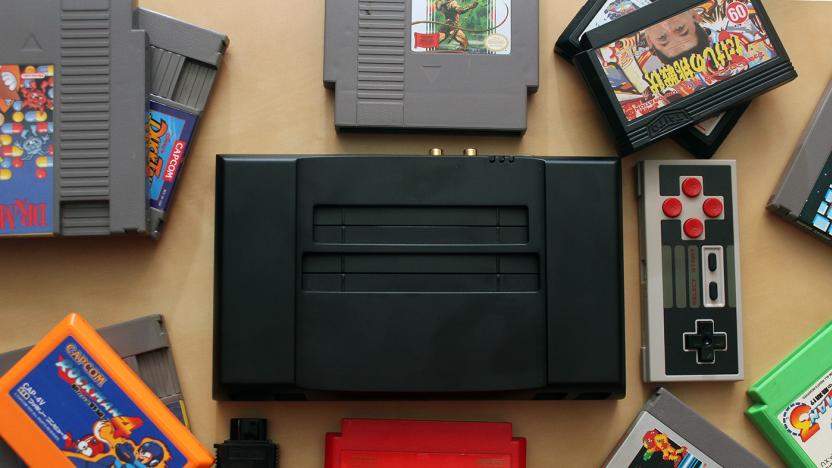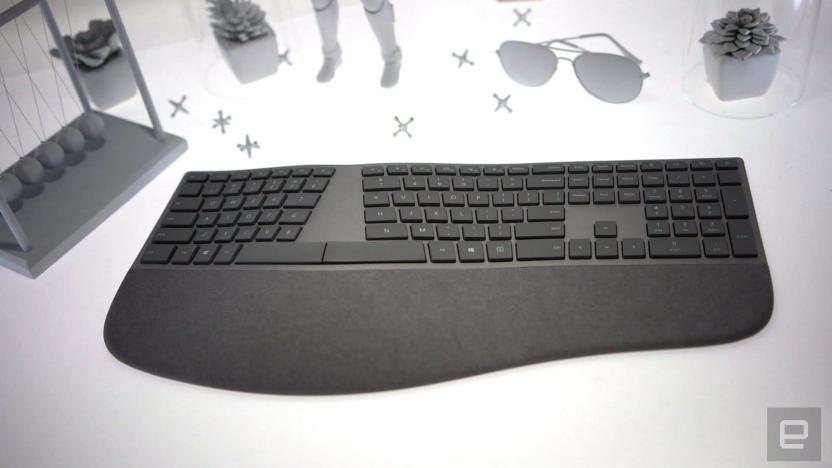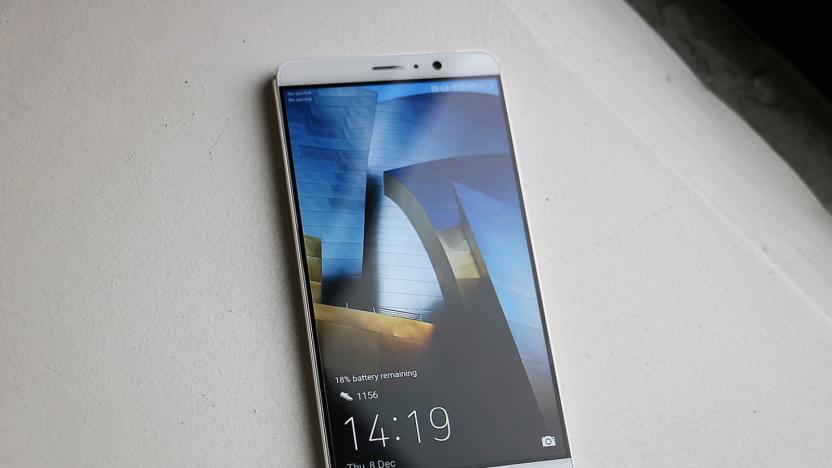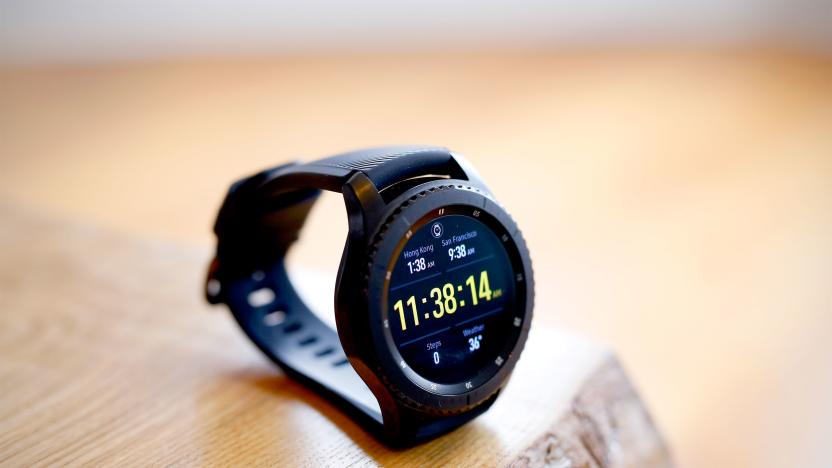uk-reviews
Latest

The Alienware 13 gets better with VR and impressive battery life
Gaming laptops used to be an outlier in the world of portable computing. When the rest of the market was focused on extending battery life, gaming laptops doubled down on raw power and thick frames designed for better airflow. Trying to find a small gaming machine that didn't sacrifice power for portability was a fool's errand. Today, things are different. Gaming laptops can be thin, have enough battery life to survive a plane flight and double as a productivity and entertainment machines with few compromises. The best recent example of this to cross my desk is the Alienware 13, a small, powerful gaming laptop that does almost everything right.

Pros and cons: Our quick verdict on Microsoft's Surface Ergonomic Keyboard
Who really cares about desktop keyboards anymore? Well, people who need to type all day without hurting their wrists, for one. Microsoft has been in the ergonomic keyboard business for decades with its "Natural" lineup. Now with the wireless Surface Ergonomic Keyboard, it's delivered its most comfortable model yet. It's a joy to type on, and its luxurious wrist rest will spark envy among your co-workers. The only big problem? It's $130. That's a high price just for a keyboard, but if you have the cash it's well worth it.

Pros and cons: Our quick verdict on NVIDIA's new Shield TV
NVIDIA's new Shield TV is a lot like its old Shield TV -- at least, on the inside. Still, the revamped Android TV set-top box is a lot smaller; it has a vastly improved game controller; and it's a much better deal at $200, since it includes the remote that used to cost an additional $50. The Shield TV also packs in a newer version of NVIDIA's GeForce Now game streaming service, and it can pipe over titles from your NVIDIA GPU-equipped gaming PC with full support for HDR. Eventually, it'll also include Google's Assistant.

Pros and cons: Our quick verdict on Dell's XPS 13 2-in-1
Convertible laptops aren't anything new these days, but Dell's XPS 13 2-in-1 still stands out from the pack. It brings in most of the premium design elements we loved about the original XPS 13, including that gorgeous 13.3-inch, near bezel-less display. But it's a lot more flexible, thanks to its ability to fold into several different orientations, and it's also completely fanless. Sure, you give up some performance to get such a multi-functional device, but for anyone who wants to veg in bed with Netflix, it'll be worth it.

The Analogue Nt Mini wants to be the last NES you'll ever buy
Trying to play an NES cartridge on Nintendo's original, 30-year-old hardware can be an exercise in frustration. The console's ancient composite cables offer terrible image quality on modern televisions, and getting games to actually run is a ballet of reseating, jostling and, of course, blowing on game cartridges. Nintendo's own NES Classic Edition and the Wii U and 3DS virtual consoles offer refuge for the casual gamer's nostalgic yearnings, but collectors looking for an authentic, cartridge-based retro gaming experience have long suffered under the dark shadow of compromise. Is it better to play on the original, but unreliable, hardware, or an NES clone plagued with compatibility issues? With the Analogue Nt Mini, you may not have to tolerate either -- but at $449, Analogue's compromise-free Nintendo doesn't come cheap.

Microsoft's Surface Ergonomic Keyboard makes typing a pleasure
If you spend most of your days typing at a desk, it's worth looking into an ergonomic keyboard. The traditional flat QWERTY keyboard design wasn't designed with comfort in mind, and really, why should you be forced to live with an input interface originally designed for typewriters in the 1870s? Microsoft has been at the forefront of the ergonomic arena for the past few decades with its "Natural" keyboards, which split the QWERTY layout into two halves to make typing easier on your hands and wrists. And with its new wireless Surface Ergonomic Keyboard, Microsoft has delivered its best model yet.

Lenovo Yoga 910 review: The devil is in the details
Hello, Engadget readers, and welcome to our first laptop review of 2017. The Lenovo Yoga 910 went on sale about two months ago and indeed, we've been working on this one for a while. During the time I've been testing it (with some very lengthy battery tests slowing things down), Engadget has published reviews of new machines from Apple, Microsoft and HP. It makes sense, then, to follow up with a critique of Lenovo's latest, not just because it's such a big name in PCs, but because the company's Yoga 900 series has, until now, ranked among our favorite laptops. The 910 ($1,180 and up), seemed like another shoo-in, with a thin and light design similar to the same Yoga machines we've praised in the past. It also offers some impressive specs for the price (a seventh-generation Core i7 processor comes standard) as well as long battery life that lives up to Lenovo's already-lofty claims. And yet.

Pros and cons: Our quick verdict on Lenovo's Phab 2 Pro
Lenovo's Phab 2 Pro has a mouthful of a name and a somewhat bland design. But what might seem like a forgettable phone really isn't: This massive 6.4-inch handset is the first available phone with Google's "Tango" 3D mapping technology. But while Tango feels magical when it works, bugs and hiccups periodically dampen the experience. Indeed, as is the case with many first-generation technologies, you're better off waiting for refinements -- that is, unless you're the sort of early adopter who needs to be on the bleeding edge. (And if you are, the $499 asking price is reasonable considering how much flagship phones typically cost.) The problem is, once you set aside Tango (which itself isn't perfect), you're left with one lackluster phone. Though well-constructed, the design isn't memorable, while the cameras and custom software are downright lousy. The possibly too-big screen will also be a deal-breaker for some. Basically, then, as cool as Tango is, you're better off waiting for the technology to improve, and for a wider variety of devices to support it.

Pros and cons: Our quick verdict on Google WiFi
Google WiFi is the company's latest (and very aptly named) wireless router. Like the OnHub router that Google put out last year, WiFi is meant to be sleekly designed and easy to use. This time, though, WiFi also can create a mesh network with other Google WiFi routers -- an alternative to standalone WiFi extenders in larger spaces, like multi-story homes. The device does indeed work as promised, and offers some useful parental control features, to boot. That said, power users (perhaps even some Engadget readers) will be turned off by the lack of a web console and the fact that there are only two Ethernet jacks. Mainstream users, however, are not likely to be disappointed.

Pros and cons: Our quick verdict on the OnePlus 3T
Usually phone makers refresh their flagship models on schedule, once a year. In a break with tradition, though, OnePlus didn't even wait six months: The 3 came out in June, with the 3T arriving not even six months later. While people who bought the OnePlus 3 this summer might be annoyed to see it made obsolete so quickly, those in the market for a new phone will be pleased to find that the similar-looking 3T brings a faster, top-of-the-line chip, an improved camera setup and much longer battery life. While it still has some tradeoffs compared to traditional flagships (see: it's relatively low-res 1080p display), it's still a great deal for $440.

Pros and cons: Our quick verdict on the LeEco Le Pro3
The Le Pro3 is the first phone available in the US from LeEco -- a company already well-known in its native China for its mobile devices and TVs (among many other things). Similar to Motorola and OnePlus, LeEco is competing on price, with the Le Pro3 ringing in at just $400. And in many ways, the company succeeded in putting out a quality product: The device is well-constructed with fast performance and long battery life. Unfortunately, the phone falls short of greatness thanks to an unreliable camera and an unintuitive interface. The lack of both a headphone jack and microSD slot don't help either, though the Le Pro3 is hardly the only phone to suffer from those shortcomings. All things considered, then, it still offers good value for the money, but isn't the best device in its price class.

Pros and cons: Our quick verdict on the Oculus Touch
The Oculus Rift VR headset went on sale back in March, but it was only this month that the optional motion controllers arrived. Better late than never, though. In fact, if you already own the Rift, you're going to want to spend an extra $199 on the Oculus Touch: It's comfortable to use, works well as a game controller and allows for smooth, precise motion control. Also, there's already a robust selection of games that support it, with even more to come. As that score of 88 suggests, we have very few complaints, but if we could change one thing, we'd like to see a rechargeable battery in future iterations. Even so, having to periodically swap out the AA battery is a small trade-off for the experience you get.

Pros and cons: Our quick verdict on the LG V20
The LG V20 is one of several flagship phones you can buy right now. And though we like it -- we gave it a score of 82 -- we recommend it with more caveats than usual. On one hand, the phone packs a Quad DAC and support for 24-bit high-resolution audio, making it a great choice for people who care about sound quality. Being a flagship, it also offers top-shelf components and it's one of the only phones available right now that runs Android Nougat. The 5.7-inch Quad HD display is also bright and crisp, though we're not sure the tiny secondary screen really adds much. That all sounds great, but keep in mind that the dual camera setup trails the imaging experience you'll get on rival devices, including the iPhone 7 Plus, Samsung Galaxy S7 or either of Google's Pixel phones. What's more, the V20 isn't waterproof -- a feature we've come to expect on high-end handsets -- and it's also difficult to use one-handed. All told, then, it's a good phone, just not necessarily your best option.

Epson's new scanner resurrected my childhood memories
My mother likes to post old scanned photos of me on Facebook. Baby me in a clown costume. Toddler me looking grumpy, having just woken up from a nap. My brother and me looking like tiny British royals on Easter Sunday. These photos are embarrassing but not necessarily for obvious reasons. I don't mind people knowing I was a child. What I do mind is that the scans aren't good: Many are crooked, badly cropped or discolored. They don't look nice, and with at least 25 years of my life captured on film, neither my mother nor I have the time to scan the entire collection, let alone fix each picture to make it presentable for public consumption. That is, until we got our hands on Epson's $650 FastFoto FF-640, which can scan one photo per second. Spoiler alert: We were done with my mom's archive in under three hours.

Pros and cons: Our quick verdict on the Huawei Mate 9
The most interesting thing about Huawei's latest flagship, the Mate 9, is actually invisible to the naked eye. Under the hood, the phone uses machine learning to anticipate which apps you're going to use when, allowing for supposedly smoother performance. What the phone would have been like without this AI, we don't know, but we can say that the performance feels brisk throughout. If fluid day-to-day use seems like table stakes, you might also be impressed with the long battery life, bright display and the fact that it actually has a headphone jack. Unfortunately, what's otherwise a great phone stumbles with low-light photography, as well as some heavy-handed software tweaks that will turn off Android purists. ] The Mate 9 isn't on sale here in the US yet, but we expect to learn pricing in the next month or so. If the price is on par with what it costs in Europe, the phone will be on par with or slightly cheaper than its rivals, which would make it a good value, so-so camera notwithstanding.

Samsung Gear S3 Frontier review: Lots of features, not enough apps
It seems like everyone is talking about how the smartwatch market is collapsing, but that hasn't stopped Samsung from taking another stab at high-end wearables. Who could blame them, really? Last year's Tizen-powered Gear S2 was full of good ideas, from that rotating bezel to its compatibility with non-Samsung Android phones. Not trying to build on that foundation would have been a shame. Enter the Gear S3 Frontier. It's a bigger, better, more refined take on Samsung's smartwatch formula, and the company threw in every feature it could think of. That rationale is Samsung through and through, and it makes the Gear S3 worthy of your consideration, even if now might not be the best time to buy a smartwatch.

Sony's Xperia Ear is not the hands-free assistant I wanted
In theory, Sony's newest wearable sounds promising. The Xperia Ear is a single Bluetooth earbud that lets you dictate messages, get weather updates and smartphone notifications, and carry out other little tasks just by talking to it. It's like having an Amazon Echo in your ear, except with far fewer skills and third-party integrations. Sony also promises a long-lasting battery that can endure a full workday of talk time with the included charging case, so you can have the assistant ready for your commands all day. Unfortunately, the Xperia Ear simply doesn't do enough to justify its $200 asking price.

ASUS' ROG Strix GL502VS is a mid-range (and VR-ready) gaming laptop
The idea of a "gaming laptop" usually brings to mind one of two images: an oversize laptop with enough power to rival a desktop machine, or a shockingly thin (and expensive) notebook that punches above its weight. Somewhere in between you'll find 15-inch systems like the ASUS ROG Strix GL502VS, a gaming laptop small and light enough to lug around, yet thick enough to house the sort of powerful internals you'd need to play just about any game you want. Though it's not a premium machine by any means, the Strix strikes a nice balance between power and portability.

HP Spectre x360 review (2016): Smaller, with more compromises
Here at Engadget, we don't have the time to review every new laptop, but we wanted to make time for HP's redesigned Spectre x360 convertible. After all, when the original came out a year and a half ago, we quickly named it one of our favorite Windows machines. So now that it's finally gotten a full makeover, we need to see if the improvements are enough to help HP keep its spot on our short list. Like the original, this new model ($1,050-plus) has a 360-degree hinge, allowing you to use it in one of four modes, but whereas the original was designed with extensive input from Microsoft, it's unclear how much of a say Microsoft had this time around. This time, too, the x360 is thinner and lighter, with a smaller footprint. It also brings a new dual fan setup for improved cooling and an upgraded webcam that supports Windows Hello facial recognition. These improvements are all welcome, and yet somehow this new version doesn't feel as polished as its predecessor.

Google WiFi review: A hassle-free router comes at a price
Google's not new to the hardware game, but with its "Made by" range, the company is making a concerted effort to marry its smart software with the gear we run it on. We've already tried the Pixel phones, Daydream View VR headset, Chromecast Ultra and Google Home, but until now, there was one Made by Google gadget we'd yet to test, and it's the one that arguably ties all the rest together: Google's aptly named WiFi router.







